
Figure 1. Power system network
Two-way and robust communication is the key aspect of realizing the vision of power system protection. There are several standardized wired and wireless communication Technologies available for various power system applications. Wireless technologies have significant benefits over wired, such has improved protection, control, speed outage restoration, operation analysis, maintenance, planning and also have low installation and maintenance cost, rapid deployment, mobility, etc. Several activities are going on in many areas of power system using this technology. This paper presents various power system applications achieved through standardized wireless communication technologies, e.g. IEEE 802.11 based wireless LAN, IEEE 802.16 based WiMAX, 3G/4G cellular, ZigBee based on IEEE 802.15, IEEE 802.20 based MobileFi, Blue tooth-IEEE802.15.1 etc. The challenges related to wire and wireless communication technologies have been discussed in brief. Addition to this, advantages of cellular communication is discussed.
Growing population and electric power needs, the demand on the power grid continues to rise. This demand requires additional grid realiability.This can be achieved by providing fast and effective communication system. Several wired and wireless communication technologies are identified for power system protection. Advanced wireless systems offer the benefits of inexpensive products, rapid deployment, low cost installations, widespread access, and mobile communications which wired technologies and even the older wireless technologies often cannot provide [4], [5]. However, in the past, wireless technologies had comparatively slow acceptance in power industries due to low data rates, interference related issues, security concerns, limited product availability, etc. Several activities have already been initiated to address the wireless technical issues, and identify suitable wireless technologies for power system. One of the suggested prioritized actions is to address the “Communications Interference in Unlicensed Radio Spectrum”. The success of this action would alleviate many issues related to wireless communication in unlicensed radio spectrum by providing a dedicated communication channels for the missioncritical inter-operations of the power system. With these motivations from recent developments and ongoing activities, the efforts have been carried out in this work to present the various smart applications using standardized wireless communication technologies as discussed in [28], e.g. IEEE 802.11 based wireless LAN, IEEE 802.16 based WiMAX,3G/4G cellular, ZigBee based on IEEE 802.15, IEEE 802.20 based MobileFi, etc. Different applications of these wireless technologies have been identified considering the latest available data rates, distance coverage, and other important technology features in power system environment. Moreover, the potential issues related to each communication technology have also been highlighted in the paper.
This paper is organized as follows. Section 1 gives the framework of power system network. Section 2 gives challenges related to wired communication system. Section 3 gives basic details of each potential wireless technology, its application in the power system protection, and the challenges have been presented. Finally, section 4 summarize the comparison and details of different wireless technologies.
Figure 1shows the power system network, it consists of two infrastructures.
In this domain consists of central generation, step up transformers and transmission network.
This domain related to electric power transmission and distribution. It consists of Control Center, Transmission Substation, Distribution Substation and different types of loads. Figure 1 shows all Information Infrastructure connections are two-way communication interfaces.

Figure 1. Power system network
This section presents the opportunities and challenges with different wire communication technologies for achieving various power system applications.
Power Line Communication (PLC) represents an economic, versatile and dependable tool for power system applications. Power line communication or Power Line Carrier (PLC), also known as Power line Digital Subscriber Line (PDSL), mains communication, power line telecom (PLT), power line networking (PLN), or Broadband over Power Lines (BPL) are systems for carrying data on a conductor also used for electric power transmission. All power line communication systems operate by impressing a modulated carrier signal on the wiring system. Different types of power line communications use different frequency bands, depending on the signal transmission characteristics of the power wiring used.
ARSEL AMR (automatic meter reading) system shown in Figure 2, each customer KWH meter is equipped with a PLC transmitter that converts the meter disk movement into an equivalent reading. Subsequently, the meter reading is appended by a unique customer code and sent to a central receiver located in the distribution transformer [1]. The system deploys Direct Sequence Spread Spectrum DSSS modulation technique working in the frequency range defined by CENELEC standard Band A form 9 KHz to 95 KHz [2], [27].

Figure 2. ARSEL PLC based AMR System
The generated PLC signal is coupled to the line at the premises entry point through a special coupling circuit designed to block the line frequency meanwhile passing the higher frequency communication signals [27]. Since its generation within the transmitter circuit, the signal experience the coupling circuit power and cable network characteristics in addition it is contaminated by noise. Finally, the receiver has to ex- tract the transmitted information carried by the weekend and distorted signal that is completely embedded in noise.
2.3 SCADA
SCADA stands for Supervisory Control and Data Acquisition. As the name indicates, it is not a full control system, but rather focuses on the supervisory level. As such, it is a purely software package that is positioned on top of hardware to which it is interfaced, in general via Programmable Logic Controllers (PLCs), or other commercial hardware modules
The Supervisory Control and Data Acquisition SCADA system shown in Figure 2 is utilized to capture and record the current trends over several days through a complex communication network. MV currents are monitored by the outgoing protection digital relays meanwhile the LV side is monitored by a special Transformer Inelegant Module (TIM) built for this purpose.
This section presents the opportunities and challenges with different wireless communication technologies for achieving various power system protection applications.
IEEE 802.11 based wireless LAN provides robust, high speed point-to-point and point-to-multipoint communication [8]. The spread spectrum technology was adopted in IEEE802.11, because it allowed multiple users to occupy the same frequency band with a minimum interference to the other users [9]. IEEE 802.11 legacy standard proposes the standard for wireless Local Area Networks (LANs) covering three non-interoperable technologies: Frequency Hopping Spread Spectrum (FHSS), Direct Sequence Spread Spectrum (DSSS), and Infrared (IR) at 1 & 2 Mbps data rates. IEEE 802.11b, also known as Wi-Fi, offers a maximum data rate of 11mbps. It operates on 2.4GHz frequency band with DSSS modulation technique. Further, currently available technologies based on IEEE 802.11a and IEEE 802.11g can provide data rates up to 54 Mbps. IEEE 802.11a operated on 5.8GHz frequency band with Orthogonal Frequency Division Multiplexing (OFDM) modulation; whereas, 802.11g, also known as enhanced Wi- Fi, operates on 2.4 GHz frequency bands with DSSS modulation technique. IEEE 802.11n based on Multiple Input Multiple Output (MIMO) technology is intended to increase data rates further, up to 600 Mbps. IEEE 802.11i (known as WPA-2) enhances the cyber security in wireless LANs using Advanced Encryption Standard (AES) [10], [11]. Deployment of wireless LAN offers various benefits over wired LAN, as it is easy to install, provides mobility of devices, less expensive.
Wireless LAN can be considered for various power system applications, such as distribution substation automation protection, and monitoring and control of distributed energy resources, especially for remotely located small substation and DERs, where data rate requirements and radio interferences are comparatively less. NIST has recognized IEC 61850 standard for substation automation and protection applications [3]. IEC 61850 standard has proposed Ethernet based communication networks to achieve interoperable Substation Automation Systems (SAS) [12]. Wireless LAN technologies are also Known as wireless Ethernet; and therefore, it can be considered for these applications.
Figure 4 shows the IEC 61850 based wireless LAN to enhance the distribution substation protection and automation. A technical report from IEEE PSRC [9] has presented protection And control applications using spread spectrum radio, some of the reported intrasubstation application includes enhanced transformer differentia protection, breaker failure, fast bus over current trip. This report proposes that Load Tap Changer (LTC) sensor with wireless feature can enhance transformer differential protection by online monitoring LTC position, as shown in Figure 4. Similarly, Wireless LAN can also be used for monitoring switchyard equipments using sensors and actuators with wireless interface.

Figure 3. Scada System Block diagram

Figure 4. Wireless LAN communication for distribution substation
Wireless LAN can be used to provide redundant wireless link in parallel with optical fiber to enhance the reliability of critical operations, as shown in Figure 4. Reference [13] has presented wireless LAN applications for protection and control of IEC 61850 based medium-voltage substation by introducing e-breaker platform.
Figure 5 shows the application of wireless LAN for intersubstation communication aided power line protection. In reference [14], authors have demonstrated the successful use of wireless LAN (Wi-Fi) for line differential protection applications in the laboratory environment. Using repeater between both the ends, the distance coverage can be enhanced; however, this would increase end-to-end delay.

Figure 5. Wireless LAN communication for inter-substation DERs
Wireless LAN point-to-point link can be used between distribution automation system and distributed energy resources, as shown in Figure 5. For rural area distribution system with more dispersed DERs, it is not economical to deploy fiber-optic communication. Hence, wireless communication technologies are more feasible.
The protection, control, monitoring, and metering between DAS and DERs have been studied in reference [15].
The challenges with wireless Ethernet technologies are: i) reliability and availability of wireless signal is less comparatively; ii) Electro-magnetic interference in high voltage environment can slow down data transmissions; iii) Radio frequency interference from wireless equipment can affect the equipments functioning; iv) limited availability of industrial-hardened wireless LAN equipment. High reliability and availability (>99.9% of time) of Wireless communication can be achieved by applying proper path engineering and system design techniques [9]. Moreover, the proper implementation of message acknowledgement, Error correction algorithms, data buffering enhances the reliability of message transmission over wireless medium. Recent developments in smart antenna, other techniques, e.g. waveguide, it is possible to develop wireless LAN equipment immune to EMI and RFI [13], investment for smart grid applications, it is expected that more industry-strength wireless LAN equipment for high voltage environment will be proliferated in the market.
Worldwide inter-operability for Microwave Access (WiMAX) technology is a part of 802.16 series standards for Wireless Metropolitan Area Network (WMAN) [16]. Main objective of WiMAX is to achieve worldwide interoperability for microwave access. In 2001, when the first draft of IEEE 802.16 standard was released, it defined the wide operating range of 10-66GHz for communication infrastructure. WiMAX forum has published a subset of the range for interoperability. For fixed communication 3.5 and 5.8GHz bands have been dedicated, while for mobile communication frequency bands 2.3, 2.5 and 3.5 GHz have been assigned. The spectrums 2.3, 2.5, 3.5GHz are licensed; whereas 5.8GHz is unlicensed spectrum. It provides data rate up to 70Mbps and distance up to 48km [11]. However, distance and network speed are inversely proportional to each other. Licensed spectrums allow higher power and longer distance transmission, which is more suitable for long distance communication. The bandwidth and the range of WiMAX provide the alternative of cable, DSL and T1 communication channel for last-mile access.
Large distance coverage and sufficiently high data rates make WiMAX technology more suitable for Wireless Automatic Meter Reading (WMAR) as a part of utility Automatic Metering Infrastructure (AMI). Figure 6 shows the WAMR system based on WiMAX. Implementation of WAMR for revenue metering offers several advantages to electric utilities and/or service provider in the smart grid environment by reducing the need for human meter readers.

Figure 6. WiMAX communication for WAMR
WiMAX network for AMI can be used to provide real-time pricing models based on real-time energy consumption of the customers. Real-time pricing capability of WAMR systems
Can also be beneficial to the customers by shifting their loads during off-peak times [17].
Currently, distribution network has almost negligible outage detection mechanism especially for residential customers, which result into low reliability of power supply. With the help of two-way communication using WiMAX, fast outage detection and restoration can be implemented.
Radio frequency hardware for WiMAX tower is Comparatively expensive, and therefore, the placement of WiMAX tower should be done optimally to reduce infrastructure costs and meet Quality of Service (QoS) requirements.
Moreover, WiMAX frequency above 10 GHz cannot penetrate through obstacles; therefore, lower frequencies are the most practical for AMI applications especially in urban area. However, the lower frequency bands are already licensed, and hence, the most likely way of utilizing WiMAX is by leasing it from the third party.
The 3G (3rd Generation) / 4G (4th Generation) cellular technology operates on the spectrum range of 824- 894MHz/1900MHz [18]. These are the licensed frequency bands. Data transmission rate of this technology is 60- 240Kbps, and distance converge depends upon the availability of cellular service [11]. This cellular network topology consists of cells, which are formed by many low power wireless transmitters. With the moment of mobile devices having cellular modem, transmission of data is also exchanged between cell to cell, which facilitates non interrupted data flow. This way it forms a point to point architecture. It can also receives data from serial or Ethernet interface and transmit data on a second interface over cellular network, to enable normally wired components to become wireless. This technology offers extensive data coverage, no maintains costs and network fully maintained by carrier [19].
The advantage with cellular technology is that the existing infrastructure can be used. Also, with the recent growth in 3G / 4G cellular technology, the data rate and Quality of Service (QoS) are improving very fast.
Code Division Multiple Access (CDMA) technology for distribution substation
Due to mobile phone users, cellular coverage is available even in very remote locations. Reference [20] has demonstrated use of Code Division Multiple Access (CDMA) technology for power system Supervisory Control and Data Acquisition (SCADA), by providing cellular communication between substation Remote Terminal Unit (RTU) and SCADA server. Figure 7 shows the application of cellular technology for SCADA interface of remote distribution substation site.
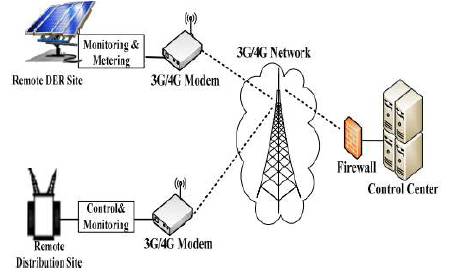
Figure 7. Cellular technology for SCADA and power grid monitoring
As shown in Figure 7, the cellular technology can be used for monitoring and metering of remotely installed DERs. Non-critical information exchange can be carried out in the form of SMS, which is cheap solution comparatively. The monitoring application of remote substation using General Packet Radio Service (GPRS) technology is explained in [19], [21].
GSM stands for Global System for Mobile Communication and is an open, digital cellular technology used for transmitting mobile voice and data services. The GSM is a circuit-switched system that divides each 200 kHz channel into eight 25 kHz time-slots. It was developed using digital technology. It has an ability to carry 64 kbps to 120 Mbps of data rates. Each GSM digitizes and compresses data, then sends it down through a channel with two other streams of user data, each in its own time slot. It operates at either the 900 MHz or 1,800 MHz frequency band. The GSM standard is the most widely accepted standard and is implemented globally.
GSM module was used for receiving Short Message Service (SMS) from user's mobile phone that automatically enable the controller to take any further action such as to switch ON and OFF the home appliances such as light, air conditioner etc. The system was integrated with microcontroller and GSM network interface using assembly language. MPLAB software was utilized to accomplish the integration. The system is activated when user sends the SMS to controller at home. Upon receiving the SMS command, the microcontroller unit then automatically controls the electrical home appliances by switching ON or OFF the device according to the user order. [6].
Wireless automatic meter reading system (WAMRS) incorporating the widely used GSM network. It provides a two way communication between the electricity company and the load by sending lot of power parameters and control signal to reach the goal of load management and power demand control. The system structure of Wireless Automatic Meter Reading System (WAMRS) is shown in Figure 8. It consists of Intelligent terminal or AMR interface, a hardware connected to a meter or a network of meters, which gathers data from meter(s). Management Center, mainly a computer or a network of computers, which collects the data sent by the AMR interface. Communication medium or GSM network, which enables communication between the AMR interface and the center [7].
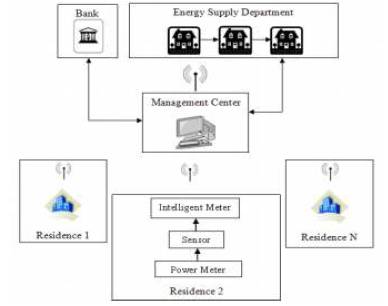
Figure 8. Structure of diagram of WAMRS
Wireless Distributed Load-Shedding Management system (WDL-SMS) shown in Figure 9. It consists of a GPRS modem that sends SMS messages over the GSM network from the control center (CPM location) to the transformer site (DCM Site) and vice versa. This is designed to handle remotely distributed transformers that are not connected to a SCADA system. The proposed system is designed for non emergency cases and proactively involves users in the shedding process.
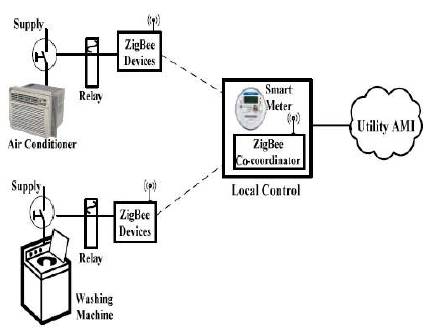
Figure 9. System architecture showing the CPM, DCM with the GPRS modems and the GSM network
Call establishment takes time delay, and moreover, call dropout can affect the large data exchange but it provides a cost-effective, wireless, always-connected, two-way communication and vast coverage and hence this technology may be used in most of the power system applications.
ZigBee is reliable, cost effective, and low power home area wireless network developed by ZigBee Alliance based on an open global standard. It provides compatibilities with IEEE 802.15.4 standard. ZigBee operates on the unlicensed frequency range of 868MHz, 15MHz and 2.4GHz with DSSS modulation technique. It offers a data rate of 20-250 Kbps. It provides coverage of 10-100m. ZigBee supports the star, tree and Mesh topologies. Transmission reach and battery life of the ZigBee devices vary depending upon the topology adopted. ZigBee employs 128-bit AES encryption for security [22]. ZigBee is widely used for building automation, security systems, remote control, remote meter reading and computer peripheral applications
ZigBee is very suitable for Wireless Sensor Networks (WSN), due to low power consumption, low cost, and low data rate. Smart Home Area Network (HAN) can be formed using advanced ZigBee network consist of Full Function Node (FFN) and Reduced Function Node (RFN). Only the FFN has the full ZigBee functionality and hence, one of the FFN becomes a network coordinator. The RFN has limited resources and does not allow some advanced functions, e.g. routing, as it is a low cost end device solution. Figure 10 shows the star configured ZigBee HAN for home appliances control.
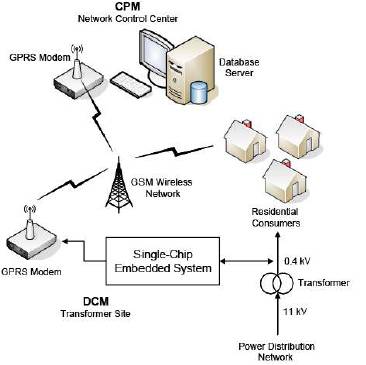
Figure 10. ZigBee technology for smart home area network-
As illustrated in Figure 10, ZigBee end devices are connected with relay which can control the power supply switch of home appliances. ZigBee coordinator manages the ZigBee network configuration, as well as, exchanges the information between each home appliances and local HAN control.
The local HAN can be automatically controlled locally with the help of controller or remotely using utility AMI infrastructure. References [23, 24] present implementation of direct load control for home appliances.
Due to limited physical size, ZigBee devices have limited battery energy supply, internal memory and processing capacity. The use of ZigBee in industrial environments is not well document [11], and hence this technology may be limited for residential automation system.
i) Mobile Broadband Wireless Access (MBWA):
IEEE 802.20 standard for MBWA provides high Bandwidth, high mobility and low latency in the licensed frequency bands below 3.5 GHz, by utilizing the positive features of both IEEE 802.11 WLANs and IEEE 802.16 WMANs. It is also known as MobileFi. It offers real time peak data rate of 1Mbps to high speed data rate of 20Mbps.This standard is optimized for full mobility up to vehicular speed of 250km/h [25].
IEEE 802.20 may be used for smart grid applications, such as broadband communication for plug-in electric vehicles, wireless backhaul for electric grid monitoring and SCADA systems.
IEEE 802.20 (MBWA) is new emerging technology, and hence, communication infrastructures for this technology are not readily available. Currently, use of this technology may be costly solution compared to cellular technology.
ii) Digital Microwave Technology: Digital microwave operates on licensed frequency band of 2-40GHz, and provides the data rate up to 155Mbps.Microwave technology provides very long distance coverage up to 60 kilometers. It accepts data from Ethernet or ATM port and transmits it to the other as microwave radio.
Digital microwave can support point to point communication for smart grid applications, e.g. transfer trip between DER and distribution substation feeder protection relay.
Microwave radio is susceptible to two types of signal fading, precipitation and multi-path interference. Encryption for security may result in to additional latency as it takes larger message sizes [11].
iii) Bluetooth
Bluetooth is part of wireless personal area network standard, IEEE 802.15.1. It is low power, short range radio frequency communication standard. It operates on 2.4–2.4835GHz unlicensed ISM band. It offers a data rate of 721Kbps [22]. Devices with Bluetooth configuration consist of complete OSI 7 layer communication stack. It can facilitate both point to point, and point to multipoint communication Configuration. Depending upon the communication configuration it offers distance coverage between 1m – 100m.
Bluetooth technology can be used for local online monitoring applications as a part of substation automation systems [26].
These devices are highly influenced by surrounding communication link and may interfere with IEEE 802.11 based wireless LAN network. The Bluetooth offers weak security compared to other standards.
Figure 11 gives the power consumption, cost/complexity and data rate of different wire less technologies.
Table 1 gives the data rate, approximate coverage and potential applications of different wireless communication technologies.
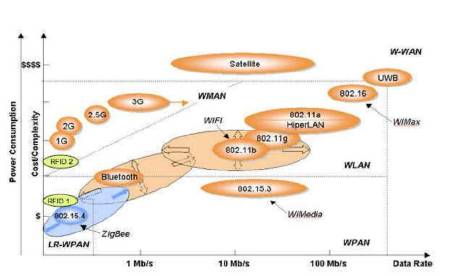
Figure 11. Comparison of different wire less technologies

Table 1. Summary of wireless communication technologies
In the first part of the paper, power system network and challenges related to wire and wireless communication infrastructure of the power system have been presented. The potential power system applications for wireless LAN, WiMAX, ZigBee, 3G/4G cellular, MobileFi, digital microwave, Bluetooth have discussed in this paper. Implementation of wireless technology offers many advantages over wired, e.g. low installation cost, mobility, remote location coverage, rapid installation, etc. However, each technology has certain challenges, as discussed in the paper, which need to be address for its future use in power system environment. Few common concerns for wireless Technologies are: i) wireless technologies operating in unlicensed frequency spectrum are more susceptible to interference/noise effects; ii) wireless technologies with licensed spectrum have less interference, but they are costly solution comparatively; iii) security of wireless media is less inherently. Several activities to address these major challenges have already been initiated. If FCC will provide an unlicensed wireless frequency band dedicated for power system smart grid, issues related to interference and cost of licensed frequency band will be alleviated. Moreover, developments of wireless technology for power system protection play a vital role in the future by reducing the installation and running cost. By comparing to all wireless technologies, cellular technology especially GSM plays major role in power system applications.
This paper is a review of all wireless communication systems for power system applications. In future work the authors will use the GSM communication system for power system protection applications.